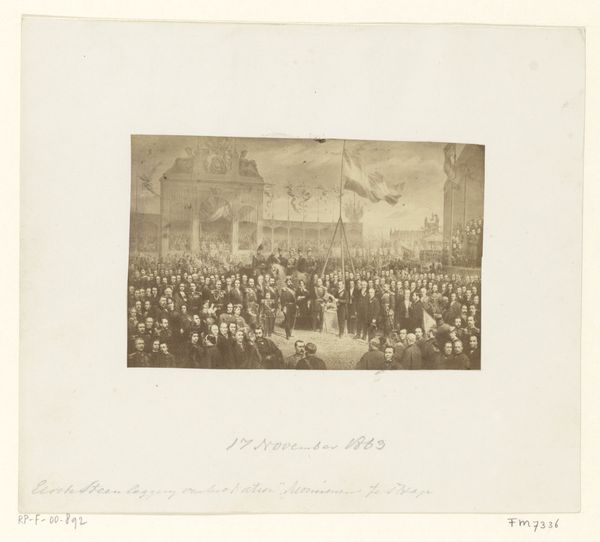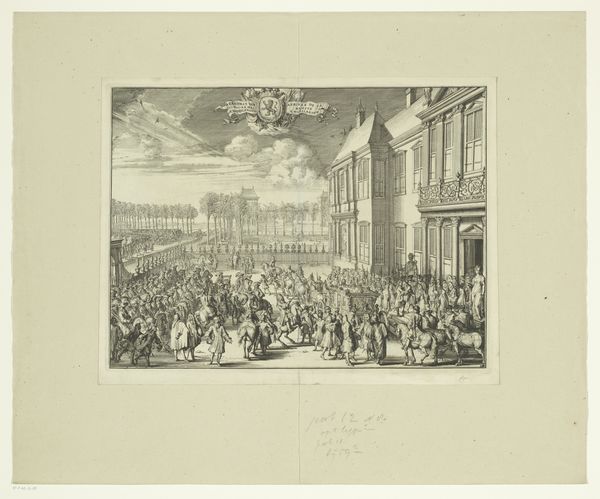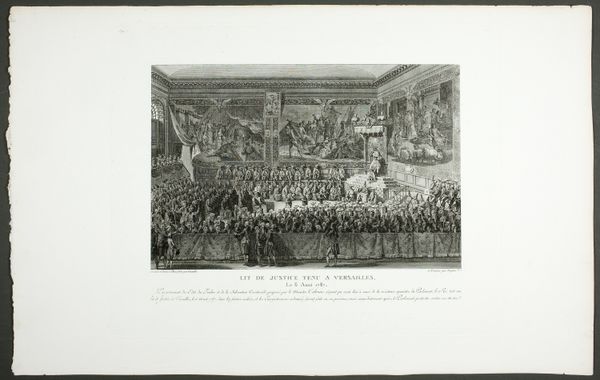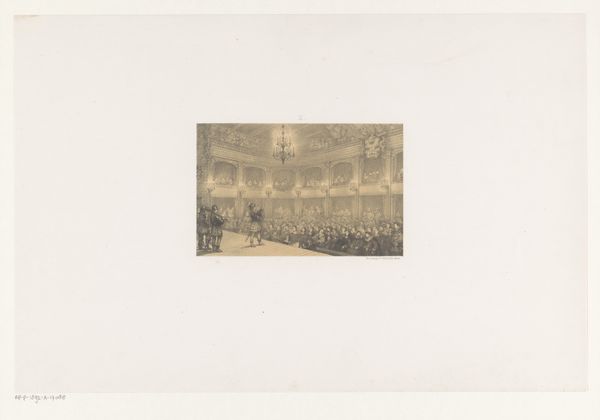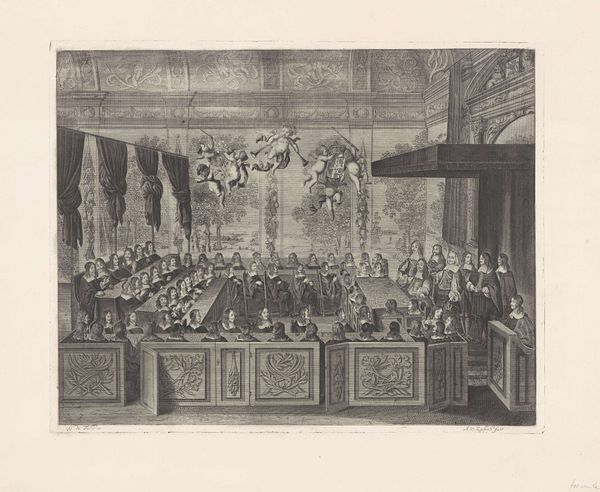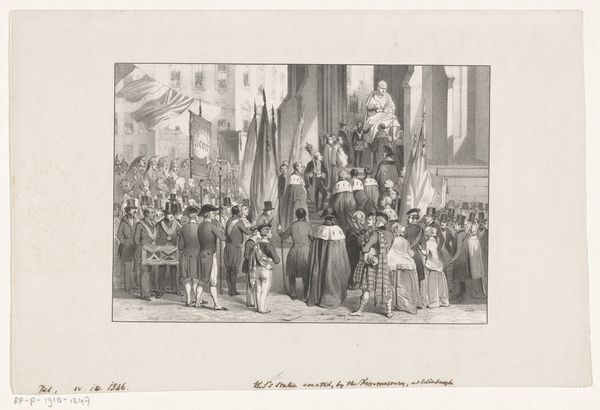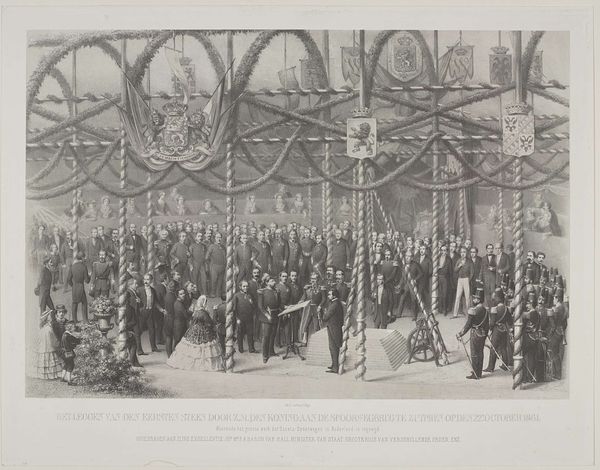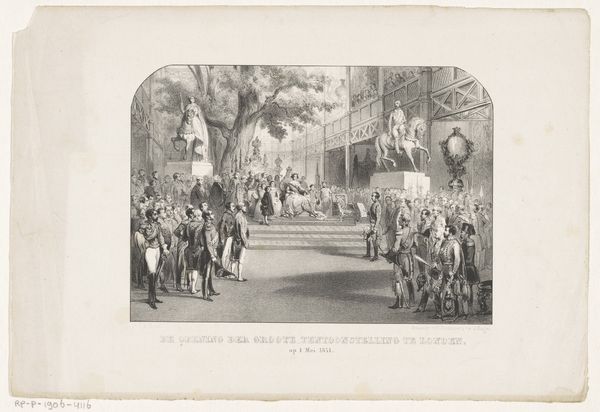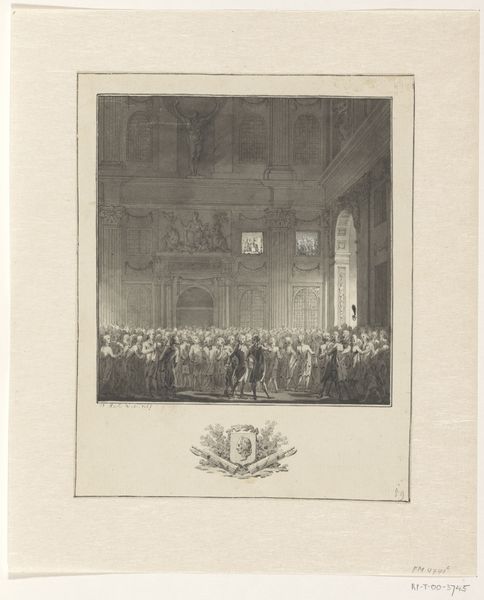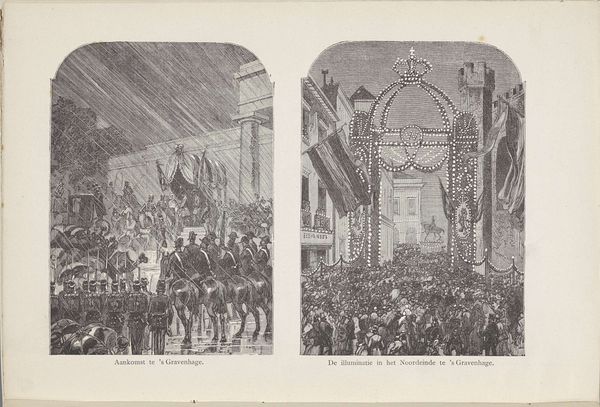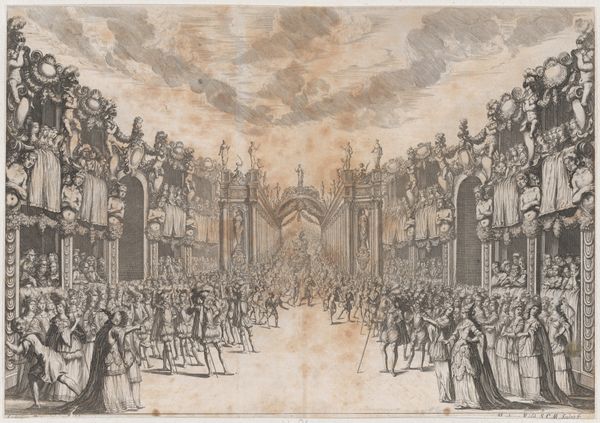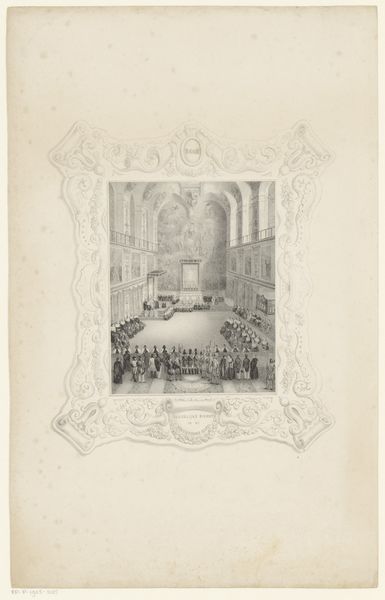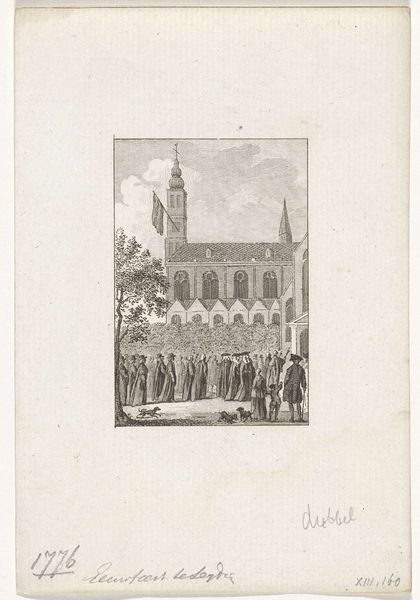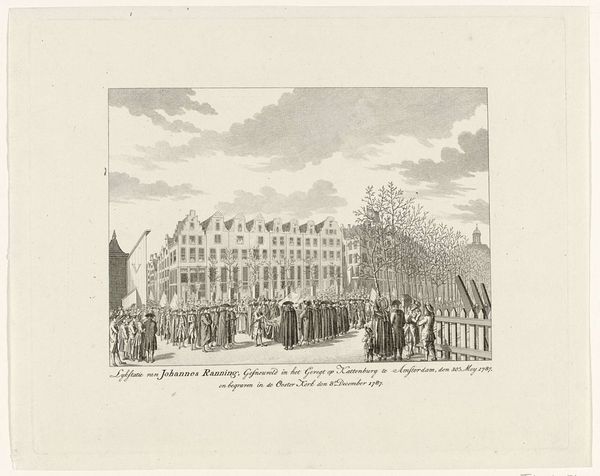
Reproductie van de prent van het leggen van de eerste steen door koning Willem III voor het Nationaal Monumen in het Willemspark, 1863 1863 - 1899
0:00
0:00
print, engraving
# print
#
landscape
#
group-portraits
#
history-painting
#
engraving
#
realism
Dimensions: height 210 mm, width 287 mm
Copyright: Rijks Museum: Open Domain
Editor: This print, dating sometime between 1863 and 1899, captures the ceremonial laying of the first stone for the National Monument by King Willem III. It is done in engraving. I'm struck by how crowded and almost chaotic the scene appears, despite its formal occasion. How do you read this imagery? Curator: It is a great observation. It's fascinating to consider how this image functions as a tool for constructing national identity. Consider that this event, carefully staged, is being reproduced for mass consumption. Who do you think the artist wants us to focus on, and why might that be? Editor: I would say the King is the main focus. But, he isn't the only one presented as important. I wonder why such an elaborate portrayal was needed. Curator: Exactly. The scale, the grandeur, the sheer number of people depicted—it all serves to legitimize the monarchy and reinforce a sense of shared national purpose, to embed in cultural memory the symbolic foundations of Dutch national identity during this specific moment in time. The monument itself then becomes a focal point, but so do these highly reproduced images and events. How did the production and circulation of these types of images, do you think, influence that national purpose? Editor: I hadn't thought about that! That the making and spreading of prints, like this engraving, would influence society at large. That it would make people, who maybe couldn't even be present, feel like they are a part of this construction. It really changes my reading of it. Thanks. Curator: Of course! By exploring the political undertones and broader societal implications, we start to unveil the multifaceted nature of visual culture and its role in the construction of historical narratives and cultural meaning.
Comments
No comments
Be the first to comment and join the conversation on the ultimate creative platform.
